
Gothic Quarter: A Timeless Journey Through Barcelona's Historic Heart
Explore Barri Gòtic, Barcelona's Gothic Quarter, where history, culture, and modern life intertwine in a captivating labyrinth of ancient streets and vibrant plazas.
Step into the enchanting labyrinth of Barri Gòtic, Barcelona's Gothic Quarter, where history comes alive in every winding alley and ancient stone. This neighborhood, steeped in rich history, offers an immersive experience for those eager to explore its medieval past. Strolling through its narrow streets, you'll encounter awe-inspiring landmarks like the majestic Barcelona Cathedral, which stands as a testament to the city's architectural prowess. The Gothic Quarter is not just about history; it's a vibrant hub of modern life. Artisans, local shops, and cozy cafes line the streets, creating a delightful blend of old and new. Plaza Reial, with its lively atmosphere and stunning palm trees, is the perfect spot to relax and soak in the local culture. Don't miss the Museu d'Història de Barcelona, where you can delve deeper into the city's fascinating past. For food lovers, Barri Gòtic offers a culinary adventure. From traditional tapas bars to trendy eateries, you'll find a variety of dining options that cater to all tastes. As night falls, the neighborhood transforms into a lively nightlife scene, with bars and clubs offering entertainment well into the early hours. Whether you're a history buff, a foodie, or simply looking to soak up the local atmosphere, Barri Gòtic promises an unforgettable experience.
Local tips in Barri Gòtic
- Wear comfortable shoes; the cobblestone streets can be tricky to navigate.
- Visit early in the morning to avoid crowds and enjoy a more peaceful experience.
- Carry a map or use a GPS app; it's easy to get lost in the winding streets.
- Try the local specialties at traditional tapas bars for an authentic culinary experience.
- Be mindful of pickpockets, especially in crowded areas.
Gothic Quarter: A Timeless Journey Through Barcelona's Historic Heart
Step into the enchanting labyrinth of Barri Gòtic, Barcelona's Gothic Quarter, where history comes alive in every winding alley and ancient stone. This neighborhood, steeped in rich history, offers an immersive experience for those eager to explore its medieval past. Strolling through its narrow streets, you'll encounter awe-inspiring landmarks like the majestic Barcelona Cathedral, which stands as a testament to the city's architectural prowess. The Gothic Quarter is not just about history; it's a vibrant hub of modern life. Artisans, local shops, and cozy cafes line the streets, creating a delightful blend of old and new. Plaza Reial, with its lively atmosphere and stunning palm trees, is the perfect spot to relax and soak in the local culture. Don't miss the Museu d'Història de Barcelona, where you can delve deeper into the city's fascinating past. For food lovers, Barri Gòtic offers a culinary adventure. From traditional tapas bars to trendy eateries, you'll find a variety of dining options that cater to all tastes. As night falls, the neighborhood transforms into a lively nightlife scene, with bars and clubs offering entertainment well into the early hours. Whether you're a history buff, a foodie, or simply looking to soak up the local atmosphere, Barri Gòtic promises an unforgettable experience.
Iconic landmarks you can’t miss
Saint James's Square
Explore the historic and vibrant Saint James's Square, the cultural heart of Barcelona, adorned with stunning architecture and rich history.
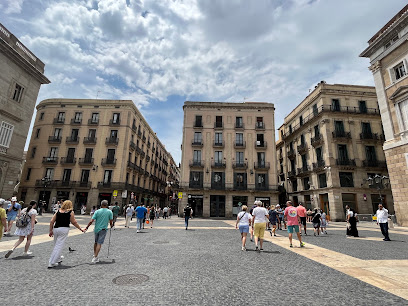
El Pont del Bisbe
Explore El Pont del Bisbe, a stunning Gothic bridge in Barcelona's historic heart, where architecture meets rich cultural heritage.
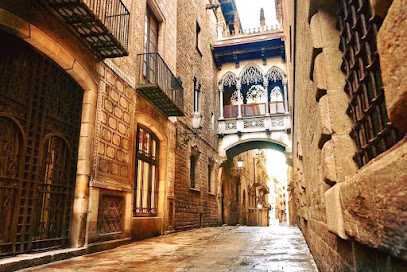
El Gòtic (barri)
El Gòtic: Barcelona's historic Gothic Quarter filled with medieval charm, vibrant culture, and artistic flair awaits every traveler.
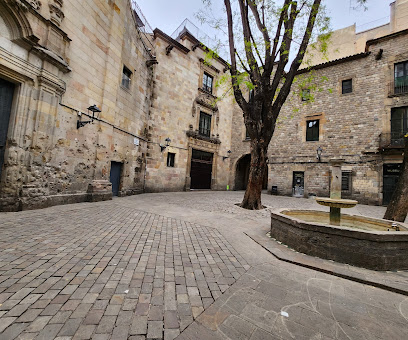
Muralla romana
Explore the Roman Wall of Barcelona, a captivating historical landmark that showcases the city's rich ancient heritage and vibrant modern culture.

Roman Towers
Explore Barcelona's rich history at the Roman Towers, a stunning historical landmark in the heart of Ciutat Vella, perfect for history lovers and photographers alike.
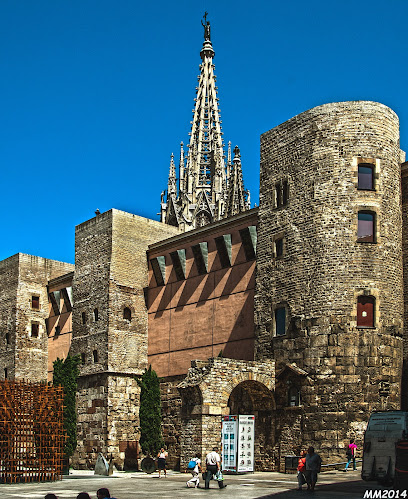
Barcelona Roman city walls
Explore the majestic remnants of ancient Rome at the Barcelona Roman city walls, a captivating historical landmark in the heart of the city.
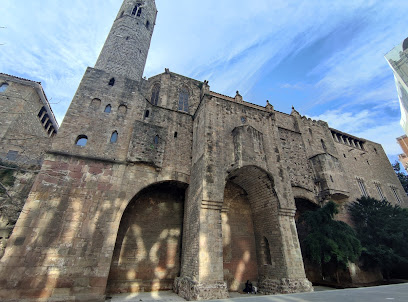
Monument als Castellers
Explore the Monument als Castellers, a stunning sculpture celebrating Catalonia's vibrant tradition of human towers in the heart of Barcelona.
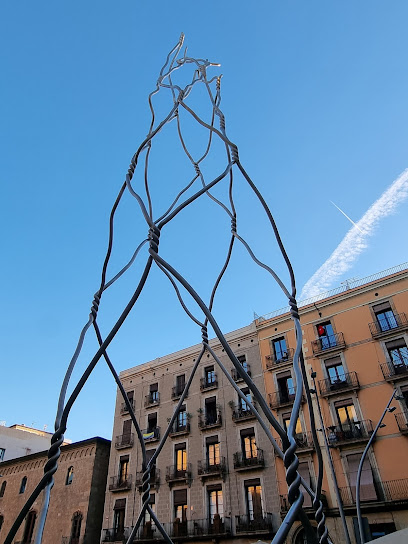
Готичний квартал
Explore the rich history and captivating architecture of the Gothic Quarter Museum, a must-visit in Barcelona's historic heart.

Barri gòtic
Discover Barri Gòtic, Barcelona's enchanting Gothic Quarter, where history, culture, and stunning architecture intertwine in a vibrant atmosphere.
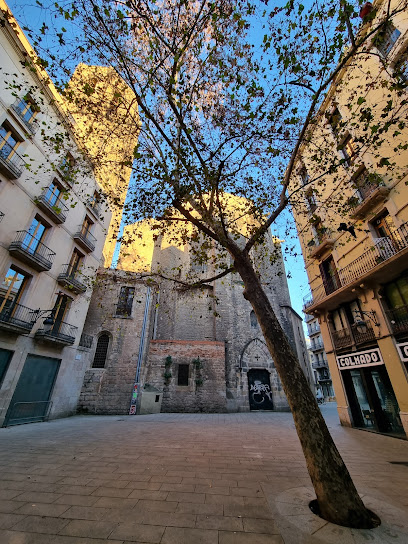
James the Conqueror
Experience the grandeur of the James the Conqueror sculpture in Barcelona's Ciutat Vella, a must-see landmark reflecting rich history and artistic excellence.
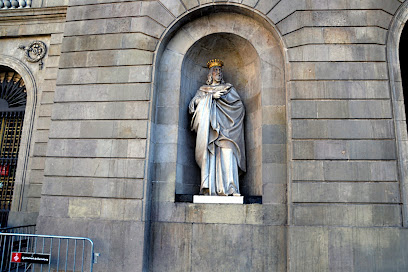
Unmissable attractions to see
Cathedral of Barcelona
Discover the awe-inspiring Gothic architecture and rich history of the Cathedral of Barcelona, a must-see landmark in the heart of the city.
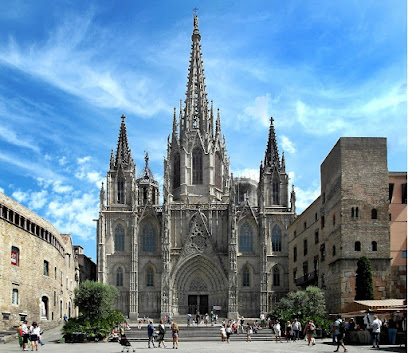
Güell Palace
Discover the breathtaking Güell Palace, a UNESCO World Heritage site in Barcelona, showcasing Gaudí's modernisme architectural brilliance and opulent history.
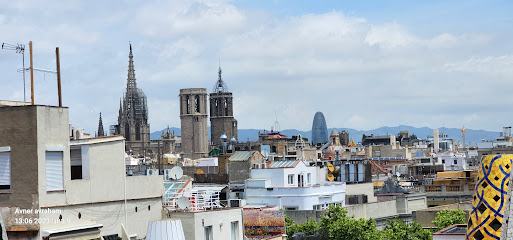
El Gòtic (barri)
Explore the enchanting El Gòtic, Barcelona's historic Gothic Quarter filled with medieval charm, vibrant culture, and unforgettable experiences.
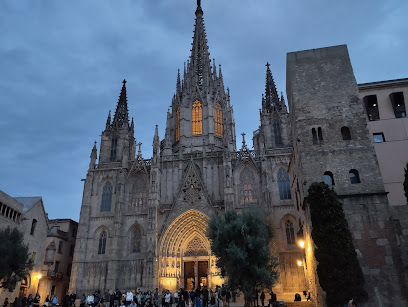
Farolas Antoni Gaudi
Explore the enchanting Farolas Antoni Gaudi in Pl. Reial, a masterpiece of Catalan modernism that highlights Gaudi's artistic genius in the heart of Barcelona.
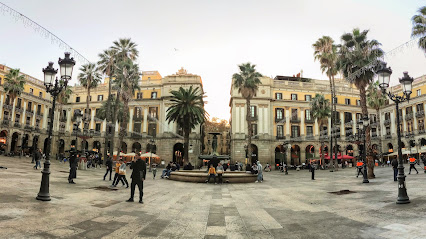
Efektowne grafiti
Discover the vibrant and artistic world of Efektowne Grafiti in Barcelona's Ciutat Vella, showcasing stunning murals and urban creativity.

Essential places to dine
L'Alcoba Azul - Tapes
Experience authentic Spanish tapas at L'Alcoba Azul in Barcelona's Ciutat Vella – where tradition meets flavor in every bite.
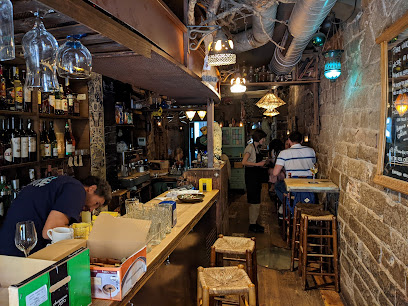
Gourmet Sensi
Discover Gourmet Sensi: A top-rated tapas restaurant in Barcelona serving exquisite Mediterranean cuisine in an inviting atmosphere.

Le Bistro Sensi
Discover authentic Mediterranean flavors at Le Bistro Sensi, Barcelona's charming tapas bar in Ciutat Vella.
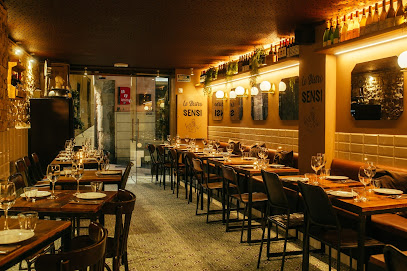
ORIO BCN Gòtic
Discover authentic Basque cuisine at ORIO BCN Gòtic - where traditional flavors meet modern dining in Barcelona's historic heart.
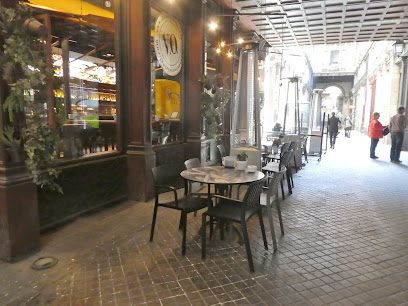
L'Antic Bocoi del Gòtic
Discover L'Antic Bocoi del Gòtic: A Culinary Journey Through Authentic Catalan Flavors in Barcelona's Historic Gothic Quarter.
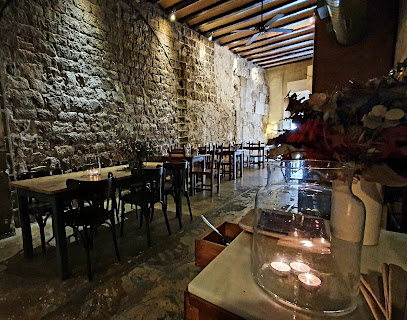
GILDA Tapes Bistro Urbà
Discover GILDA Tapes Bistro Urbà: A culinary treasure in Barcelona offering exquisite tapas and Belgian delights for every palate.

Bodega del Gòtic
Discover authentic grilled cuisine in Ciutat Vella at Bodega del Gòtic, where every meal is a celebration of local flavors.
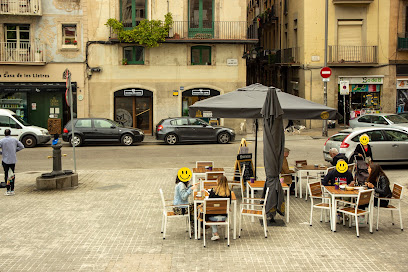
a Restaurant
Experience authentic Mediterranean flavors at this charming restaurant in Ciutat Vella, Barcelona - where every meal tells a story.
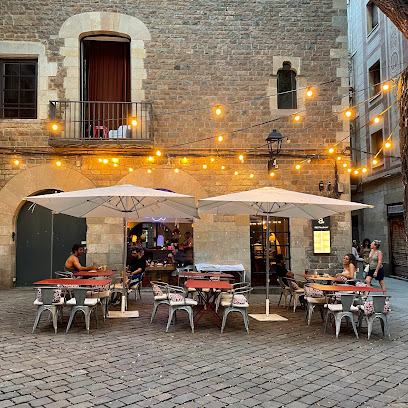
La Alcobita - Tapas
Discover authentic Spanish tapas at La Alcobita in Barcelona's historic Ciutat Vella district - a culinary experience not to be missed.
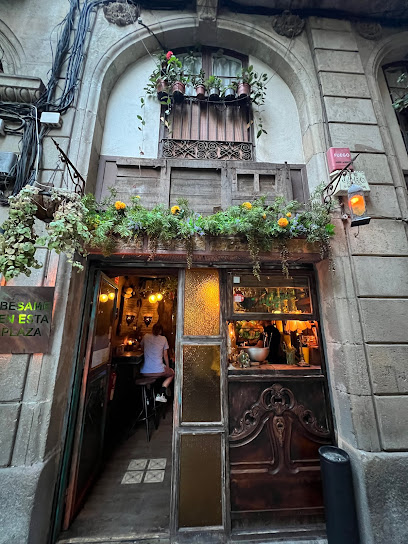
Le Bouchon
Experience authentic Catalonian tapas in the heart of Ciutat Vella at Le Bouchon, where every dish tells a story.
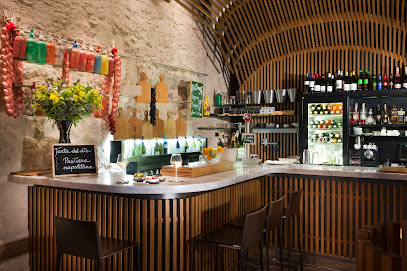
Markets, malls and hidden boutiques
LUCIERNAGA - Gift Boutique Barcelona
Explore Luciernaga, Barcelona's charming gift boutique, for unique artisanal gifts, gourmet treats, and delightful home goods in the heart of Ciutat Vella.
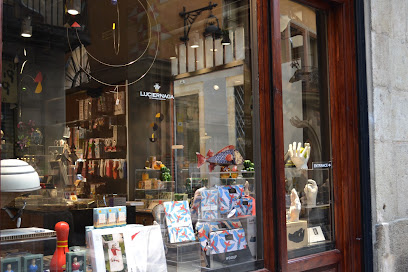
Barcelona Spain Iconic
Explore the charm of Barcelona with unique crafts and souvenirs at Barcelona Spain Iconic, where local artistry meets vibrant culture.
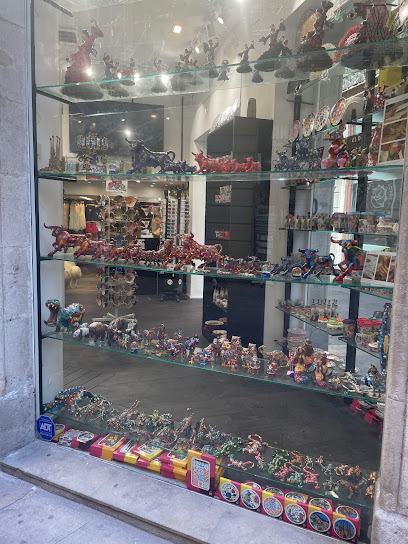
Lafayette New York Streetwear Boutique
Discover the essence of urban fashion at Lafayette New York Streetwear Boutique in the vibrant Ciutat Vella of Barcelona.
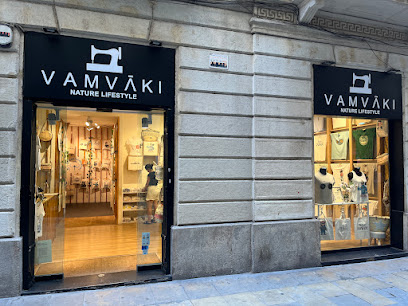
Barcelona Duck Store
Discover the whimsical charm of the Barcelona Duck Store, a unique gift shop in Ciutat Vella, filled with playful souvenirs that capture the city's spirit.

Botiga artesana gift store
Discover unique handcrafted souvenirs at Botiga Artesana, a must-visit gift shop in the heart of Barcelona's historic Ciutat Vella.
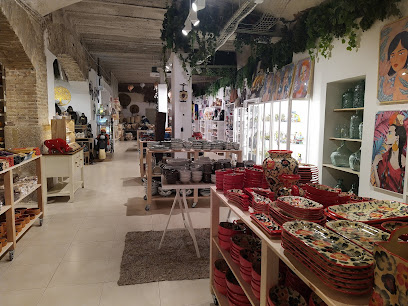
Gift Shop
Explore a charming gift shop in Ciutat Vella, Barcelona, offering unique souvenirs and artisan crafts that capture the essence of this vibrant city.

Barcelona Goes Latin Pop-Up Store
Explore the vibrant fusion of fashion and culture at Barcelona Goes Latin, a must-visit pop-up store in Ciutat Vella, Barcelona.
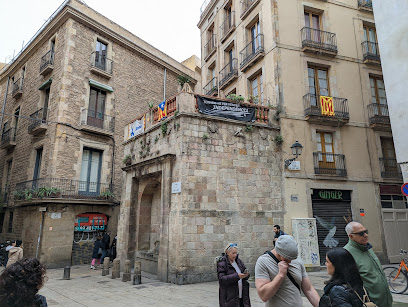
Oh ! My Gift Barcelona
Discover unique souvenirs and handmade crafts at Oh! My Gift Barcelona, where local artistry meets vibrant culture.
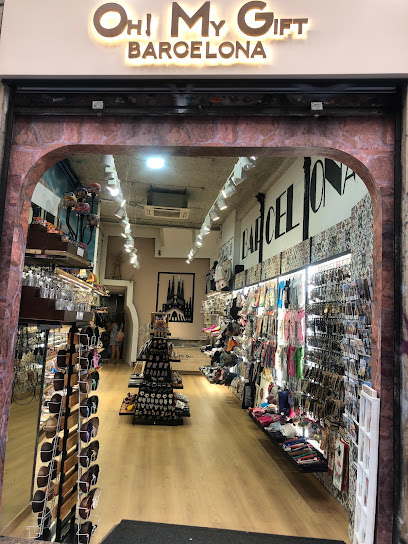
Barcelona Today The Gift Shop
Discover unique local gifts and souvenirs that embody the charm and culture of Barcelona at Barcelona Today Gift Shop.

Windarts
Explore Windarts in Ciutat Vella, Barcelona, for unique gifts and handcrafted treasures showcasing local artistry and creativity.

Essential bars & hidden hideouts
Bar Sincopa
Discover Bar Sincopa, a lively bar in Barcelona's Ciutat Vella, known for its colorful decor and delightful mojitos, perfect for an unforgettable night out.

Bar Manchester
Experience the vibrant nightlife of Barcelona at Bar Manchester, where delicious drinks and great vibes await in the heart of Ciutat Vella.

Bar Mariatchi
Experience the vibrant spirit of Barcelona at Bar Mariatchi, where authentic Spanish drinks and tapas await in a lively, inviting atmosphere.
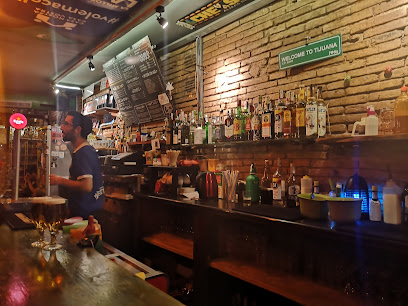
First Cocktail Bar Barcelona
Experience the vibrant nightlife of Barcelona at First Cocktail Bar, renowned for its exquisite cocktails and lively atmosphere.
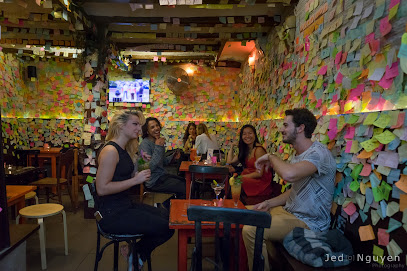
Ascensor Cocktail Bar
Discover Ascensor Cocktail Bar in Ciutat Vella, Barcelona, where exquisite cocktails meet a vibrant nightlife atmosphere.
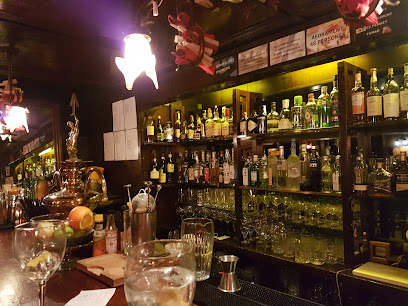
La Burnessa
Experience the vibrant nightlife of Barcelona at La Burnessa, a lively cocktail and salsa bar in Ciutat Vella, perfect for dancing and unforgettable drinks.
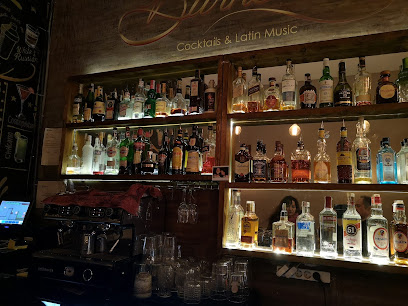
Milans Cocktail Bar
Discover Milans Cocktail Bar, a vibrant haven in Ciutat Vella where creative cocktails and delicious tapas await you.
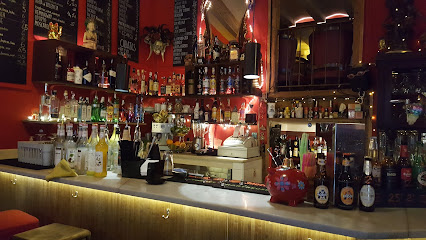
Sugar Cocktail Bar Barcelona
Enjoy creative cocktails and a lively atmosphere at Sugar Cocktail Bar in Barcelona's vibrant Ciutat Vella district.
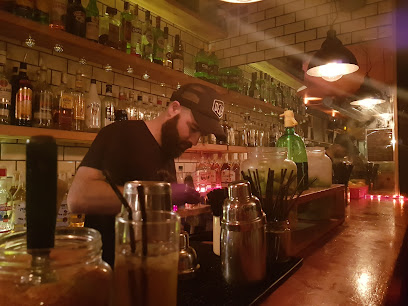
Sub Rosa
Discover the enchanting Sub Rosa cocktail bar in Ciutat Vella, where innovative mixology meets a cozy atmosphere in the heart of Barcelona.
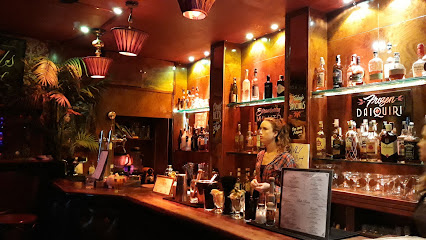
Bar 7
Experience the vibrant nightlife of Barcelona at Bar 7, offering a cozy atmosphere, delicious drinks, and a taste of local culture.

Local Phrases
-
- HelloHola
[oh-lah] - GoodbyeAdiós
[ah-dyohs] - YesSí
[see] - NoNo
[noh] - Please/You're welcomePor favor/De nada
[por fah-vor/deh nah-dah] - Thank youGracias
[grah-thyahs] - Excuse me/SorryPerdón/Lo siento
[pehr-dohn/loh syehn-toh] - How are you?¿Cómo estás?
[koh-moh ehs-tahs] - Fine. And you?Bien. ¿Y tú?
[byen. ee too] - Do you speak English?¿Hablas inglés?
[ah-blahs een-glehs] - I don't understandNo entiendo
[noh ehn-tyen-doh]
- HelloHola
-
- I'd like to see the menu, pleaseMe gustaría ver el menú, por favor
[meh goos-tah-ree-ah behr ehl meh-noo, por fah-vor] - I don't eat meatNo como carne
[noh koh-moh kahr-neh] - Cheers!¡Salud!
[sah-lood] - I would like to pay, pleaseMe gustaría pagar, por favor
[meh goos-tah-ree-ah pah-gahr, por fah-vor]
- I'd like to see the menu, pleaseMe gustaría ver el menú, por favor
-
- Help!¡Ayuda!
[ah-yoo-dah] - Go away!¡Vete!
[veh-teh] - Call the Police!¡Llama a la policía!
[yah-mah ah lah poh-lee-thee-ah] - Call a doctor!¡Llama a un médico!
[yah-mah ah oon meh-dee-koh] - I'm lostEstoy perdido
[ehs-toy pehr-dee-doh] - I'm illEstoy enfermo
[ehs-toy ehn-fehr-moh]
- Help!¡Ayuda!
-
- I'd like to buy...Me gustaría comprar...
[meh goos-tah-ree-ah kohm-prahr] - I'm just lookingSolo estoy mirando
[soh-loh ehs-toy mee-rahn-doh] - How much is it?¿Cuánto cuesta?
[kwan-toh kwehs-tah] - That's too expensiveEs demasiado caro
[ehs deh-mah-syah-doh kah-roh] - Can you lower the price?¿Puedes bajar el precio?
[pweh-dehs bah-hahr ehl pree-syoh]
- I'd like to buy...Me gustaría comprar...
-
- What time is it?¿Qué hora es?
[keh oh-rah ehs] - It's one o'clockEs la una
[ehs lah oo-nah] - Half past (10)Las diez y media
[lahs dyehs ee meh-dyah] - MorningMañana
[mah-nyah-nah] - AfternoonTarde
[tahr-deh] - EveningNoche
[noh-cheh] - YesterdayAyer
[ah-yehr] - TodayHoy
[oy] - TomorrowMañana
[mah-nyah-nah] - 1Uno
[oo-noh] - 2Dos
[dohs] - 3Tres
[trehs] - 4Cuatro
[kwah-troh] - 5Cinco
[theen-koh] - 6Seis
[sehs] - 7Siete
[syeh-teh] - 8Ocho
[oh-choh] - 9Nueve
[nweh-veh] - 10Diez
[dyehs]
- What time is it?¿Qué hora es?
-
- Where's a/the...?¿Dónde está...?
[dohn-deh ehs-tah] - What's the address?¿Cuál es la dirección?
[kwal ehs lah dee-rehk-syohn] - Can you show me (on the map)?¿Puedes mostrarme (en el mapa)?
[pweh-dehs moh-strar-meh (ehn ehl mah-pah)] - When's the next (bus)?¿Cuándo es el próximo (autobús)?
[kwan-doh ehs ehl proh-ksee-moh (ow-toh-boos)] - A ticket (to ....)Un billete (a ....)
[oon bee-yeh-teh (ah)]
- Where's a/the...?¿Dónde está...?
History of Barri Gòtic
-
The Barri Gòtic, or Gothic Quarter, is built upon the remnants of the ancient Roman city of Barcino, established around 15 BC. Archaeological excavations have uncovered ruins of Roman walls, columns, and even a temple dedicated to Augustus, reflecting the area's significance as a commercial and military hub in Roman Hispania.
-
During the 13th to 15th centuries, as Barcelona flourished as a maritime power, the Barri Gòtic began to take shape with the construction of numerous Gothic buildings. Notable structures such as the Cathedral of Santa Eulàlia and the Plaça del Rei were erected, showcasing the intricate designs and grandeur of Gothic architecture that would define the neighborhood.
-
The Barri Gòtic was not just a witness to architectural evolution but also a stage for political upheaval. The Catalan Civil War (1462-1472) resulted in significant destruction, and the resulting tensions between the Catalan and Castilian crowns affected the neighborhood's dynamics and governance.
-
The industrial revolution in the 19th century prompted urban renewal efforts in Barcelona, leading to the demolition of many medieval structures in the Barri Gòtic to make way for modern developments. This period was marked by a growing emphasis on tourism and the preservation of historical sites, which sparked a renewed interest in the Gothic Quarter's unique charm.
-
The 20th century saw a cultural renaissance in the Barri Gòtic, with the emergence of artists, writers, and musicians who were drawn to the neighborhood's rich history and vibrant atmosphere. The establishment of cultural events and festivals, such as the Festes de la Mercè, further solidified the area's status as a cultural hub in Barcelona.
-
Today, the Barri Gòtic is a bustling tourist destination, known for its narrow medieval streets, historic buildings, and lively squares. The blending of history with contemporary life has transformed the neighborhood into a vibrant area where locals and visitors alike can experience the rich tapestry of Barcelona's past while enjoying modern amenities.
Barri Gòtic Essentials
-
Barri Gòtic is centrally located in Barcelona, making it easily accessible from other neighborhoods. From Plaça de Catalunya, you can walk to Barri Gòtic in approximately 10-15 minutes. Alternatively, you can take the L3 (Green Line) metro to Liceu station or the L4 (Yellow Line) to Jaume I station, both of which are within a short walking distance of the area. Buses also serve the vicinity, with several lines stopping at nearby stops.
-
Barri Gòtic is best explored on foot, as its narrow streets and alleys can be hard to navigate by vehicle. Public transport options include the metro, with L3 and L4 lines close by, and several bus routes. Bicycles can be rented from various providers throughout the city, and there are designated bike lanes leading to the area. However, be cautious of pedestrian-only zones.
-
While Barri Gòtic is generally safe for tourists, it is wise to remain vigilant. Pickpocketing can occur, especially in crowded areas like La Rambla and near popular attractions such as the Cathedral of Barcelona. Avoid displaying valuable items and be cautious in dimly lit areas at night. It’s recommended to stay away from the less crowded alleys after dark.
-
In case of an emergency, dial 112 for immediate assistance. The local police station is located within the neighborhood, and there are several hospitals nearby, such as Hospital del Mar. Travel insurance covering medical emergencies is advisable. Pharmacies are also readily available for minor health concerns.
-
Fashion: Do wear comfortable shoes for walking, as the streets can be uneven. Dress modestly when visiting religious sites. Religion: Do respect local customs and be mindful of noise levels in sacred spaces. Public Transport: Do validate your ticket before boarding. Don’t eat or drink on public transport. Greetings: Do greet locals with a friendly 'Hola' (Hello). Eating & Drinking: Do try local tapas and enjoy meals at outdoor terraces. Don’t rush through meals, as dining is a social experience.
-
To experience Barri Gòtic like a local, explore the lesser-known alleys and enjoy a coffee at a traditional café. Visit local shops for unique souvenirs rather than tourist traps. Don’t miss the vibrant atmosphere of the Plaça del Pi and the many small art galleries dotted around. Engage with local artisans, as many are eager to share stories about their crafts. Attending local festivals can also provide insight into the culture and community.
Nearby Cities to Barri Gòtic
-
Things To Do in Tarragona
-
Things To Do in Girona
-
Things To Do in Lleida
-
Things To Do in Pas de la Casa
-
Things To Do in Escaldes-Engordany
-
Things To Do in Andorra la Vella
-
Things To Do in Encamp
-
Things To Do in Soldeu
-
Things To Do in Canillo
-
Things To Do in La Massana
-
Things To Do in Arinsal
-
Things To Do in Ordino
-
Things To Do in El Serrat
-
Things To Do in Palma de Mallorca
-
Things To Do in Huesca













